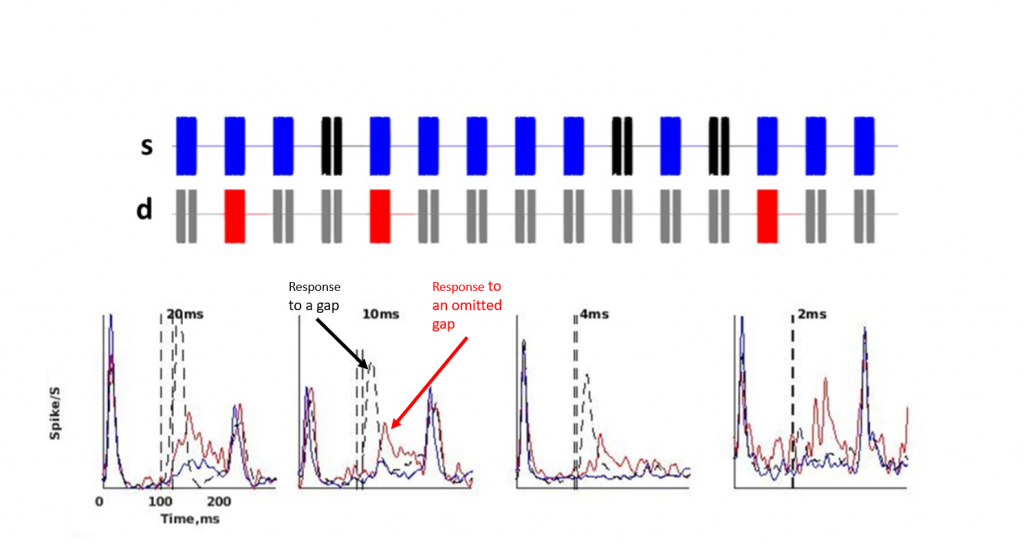Awwad et al. (2023) studied the coding of gaps in auditory cortex of awake, non-behaving rats, recording local field potentials and spiking activity. Figure 1 shows local field potentials evoked in the auditory cortex in response to pairs of noise bursts separated by short gaps (2-20 ms). These stimuli have four major acoustic events: the onset of the stimulus (beginning of the first noise burst that delimits the gap, also called ‘the first marker’); the onset of the gap (offset of the first marker; such responses can be seen at the longest gap durations in Fig. 1); to the offset of the gap (onset of the second marker); and to the offset of the whole stimulus (end of the second marker). The responses to the onset and the offset of the gap are the ‘gap responses’. Gap threshold (the minimum gap duration that results in detectable gap responses) corresponds roughly to psychoacoustic thresholds (<5 ms). Similar gap responses are also obvious in spiking activity of cortical neurons.
Awwad et al. show that such stimuli evoke a rich repertoire of ‘surprise’ responses – responses to unexpected gaps are larger than responses to expected gaps, and this is true for the responses to gap onset as well as to gap offset. Most interestingly, Awwad et al. discovered ‘omission responses’ – responses to expected gaps that are omitted. Omission responses are evoked when rare, gap-less, noise bursts are presented as part of a sequence that contains mostly noise bursts with gaps (red stimuli among gray stimuli in the schematic of case ‘d’, top of Figure 2). The responses to these gap-less noise bursts (red lines, Fig. 2, bottom) are compared with the responses to the same noise bursts when they are common in the sequence (blue stimuli in the schematic of case ‘s’, top of Figure 2; blue lines, bottom of Fig. 2). The dashed black line shows the responses to expected gaps. Note (1) the elevated activity when gaps were expected but omitted (red lines above blue lines) that (2) occurs at or somewhat later than the gap response itself (red responses follow black responses). Omission responses have been found in unanesthetized rats, but are largely absent under anesthesia.
Figure 1:

Figure 2:

